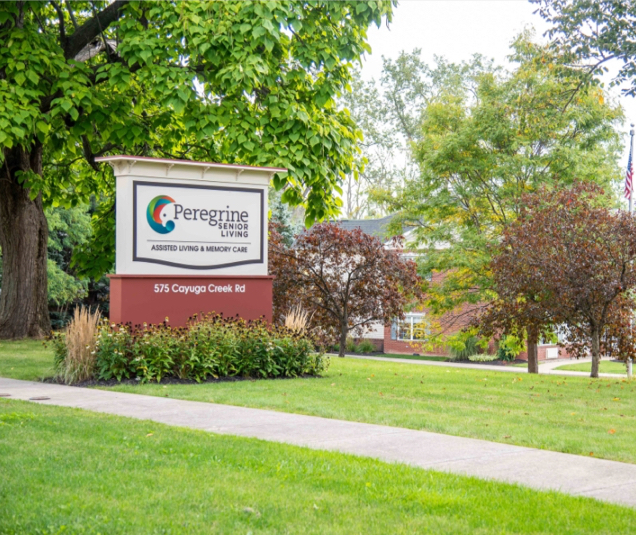Living in an assisted living community doesn’t mean giving up independence, even if you use a wheelchair. These communities are built with accessibility in mind, offering tailored support and features that ensure comfort and mobility.
With the right care and accommodations, people who use wheelchairs can thrive and stay active while enjoying a supportive environment.
Exploring Mobility Support in Assisted Living
Communities across the country are evolving to provide better support for those using wheelchairs, allowing them to maintain independence and enjoy a fulfilling lifestyle. The right community can offer:
- Extensive accessibility features
- Personalized care plans
- A supportive environment focusing on individual capabilities
With thoughtful design and innovative practices, these environments ensure that people who use wheelchairs experience the freedom to live life on their own terms.
They prioritize accessibility and inclusivity, paving the way for residents to achieve personal growth and engage in social activities comfortably.
Are Wheelchair Users Eligible for Assisted Living?
The eligibility of wheelchair users for assisted living depends on their overall health and specific needs. Assisted living can provide the right balance of independence and support for those whose primary challenges are mobility-related rather than healthcare-intensive.
Communities have begun to accept and encourage wheelchair users to join them, understanding that mobility assistance doesn’t diminish a person’s ability to live a vibrant life.
These places offer an ideal option for those who want to maintain their independence while having support nearby when needed, creating a nurturing community for everyone.
How Assisted Living Communities Support Wheelchair Users
Support comes in many forms, from physical modifications to tailored care. Assisted living communities are designed to create an environment where residents feel comfortable and empowered, no matter their mobility needs.
Many communities offer adaptable living spaces equipped with supportive devices like:
- Grab bars
- Ramps
- Spacious layouts to accommodate wheelchairs
Caregivers in these communities receive training to understand and meet the varied needs of wheelchair users, from providing mobility assistance to facilitating participation in daily activities.
This level of care enables residents to continue engaging in routines and hobbies they love while feeling a sense of belonging within the community.
Assessing the Level of Care Required
Determining the level of care an individual needs is crucial in selecting the right living arrangement. It involves considering factors such as:
- Daily living activities
- Personal care needs
- Health management requirements
A comprehensive evaluation can guide families and potential residents toward an informed decision, ensuring the chosen assisted living community matches their needs.
Each person’s care needs may evolve over time. Many assisted living communities offer flexible care options that can adapt to these changes, allowing residents to move through life stages without needing to relocate.
Accessible Features in Assisted Living Communities

Modern assisted living communities are equipped with various accessible features designed to enhance comfort and ease of navigation for wheelchair users. Key features typically include:
- Wider doorways for easy wheelchair access
- Elevators for multi-level buildings
- Thoughtfully designed recreational areas
Beyond physical amenities, many communities also offer programs and services aimed at empowering residents. Examples include:
- Wheelchair-accessible transportation for offsite activities
- Engaging social events
- Wellness programs that accommodate residents’ mobility levels without compromising on excitement or creativity
Questions to Ask About Mobility Support
When exploring assisted living options, use the opportunity to gather information and ask relevant questions to make a well-informed decision. Key questions should address:
- What specific features make a facility accessible for wheelchair users?
- How does the staff handle mobility assistance requests?
- What is the community’s approach to encouraging social interaction and independence among wheelchair users?
Getting answers to these questions can give potential residents and their families peace of mind, knowing that the facility meets their physical needs and aligns with their values.
When Assisted Living May Not Be the Best Fit
Although assisted living offers numerous benefits for wheelchair users, there are instances where it might not be the best solution.
For seniors needing more frequent medical supervision or specialized care beyond mobility support, more comprehensive options, such as skilled nursing communities or in-home care services, might be worth exploring.
Assessing the balance between support, social engagement, and medical needs is key to selecting an environment where you or your loved one can thrive safely and happily. Not every community suits every resident, and being realistic about specific requirements is important.
Finding the Right Assisted Living Community for Your Needs
Finding the ideal assisted living community takes time, research, and engagement. The process involves visiting different communities, engaging with staff, and considering each community’s amenities, values, culture, and residents.
A thorough evaluation of different communities can help identify the best fit, making the transition smoother and more comfortable. Residents and their families must feel confident that they’ve selected a place where they will receive needed support, participate in enriching activities, and grow. If you’re interested in learning more about how Peregrine Senior Living at Cheektowaga aligns with your goals, contact us or book a tour of our community.












Wishing you a Christmas filled with the simple joys that matter most: love, laughter, and time spent with those who make life meaningful! 💌
Within our Peregrine communities, the holiday spirit comes alive through shared meals, cherished traditions, and the connections that make every day feel like home.
From our family to yours, Merry Christmas and blessings for the season ahead.
peregrinecheektowaga.com/ ... See MoreSee Less
0 CommentsComment on Facebook
🎄 The holidays are in full swing!
We celebrated with our families two weeks ago, and it was so much fun. The evening was filled with lots of great food, wonderful holiday music, and cherished time spent together. Thank you to everyone who joined us and helped make the celebration so special! ... See MoreSee Less
0 CommentsComment on Facebook
Yesterday, we had the pleasure of welcoming Maryvale High School to our community for a special performance. Their singing and music were beautiful, and they truly brightened our day. We loved every minute of it and are so thankful for their visit! ... See MoreSee Less
1 CommentsComment on Facebook
Thank you to Walmart for choosing our community to deliver gifts to our residents and spread so much Christmas cheer. We are incredibly appreciative of your generosity and kindness! ... See MoreSee Less
3 CommentsComment on Facebook
As the candles of Hanukkah shine brightly, we’re reminded of the strength of faith, the warmth of family, and the enduring power of hope.
May each night bring moments of reflection, joy, and togetherness for all who celebrate. 🕎
From our Peregrine family to yours—Happy Hanukkah!
peregrinecheektowaga.com/ ... See MoreSee Less
0 CommentsComment on Facebook
Thank you to Tyshawn from the Wounded Warriors Project for visiting our community and giving such a heartfelt presentation. We truly appreciate you taking the time to share your message with our residents. ... See MoreSee Less
1 CommentsComment on Facebook
Pictures from our last craft show. The vendors are so creative! ... See MoreSee Less
1 CommentsComment on Facebook